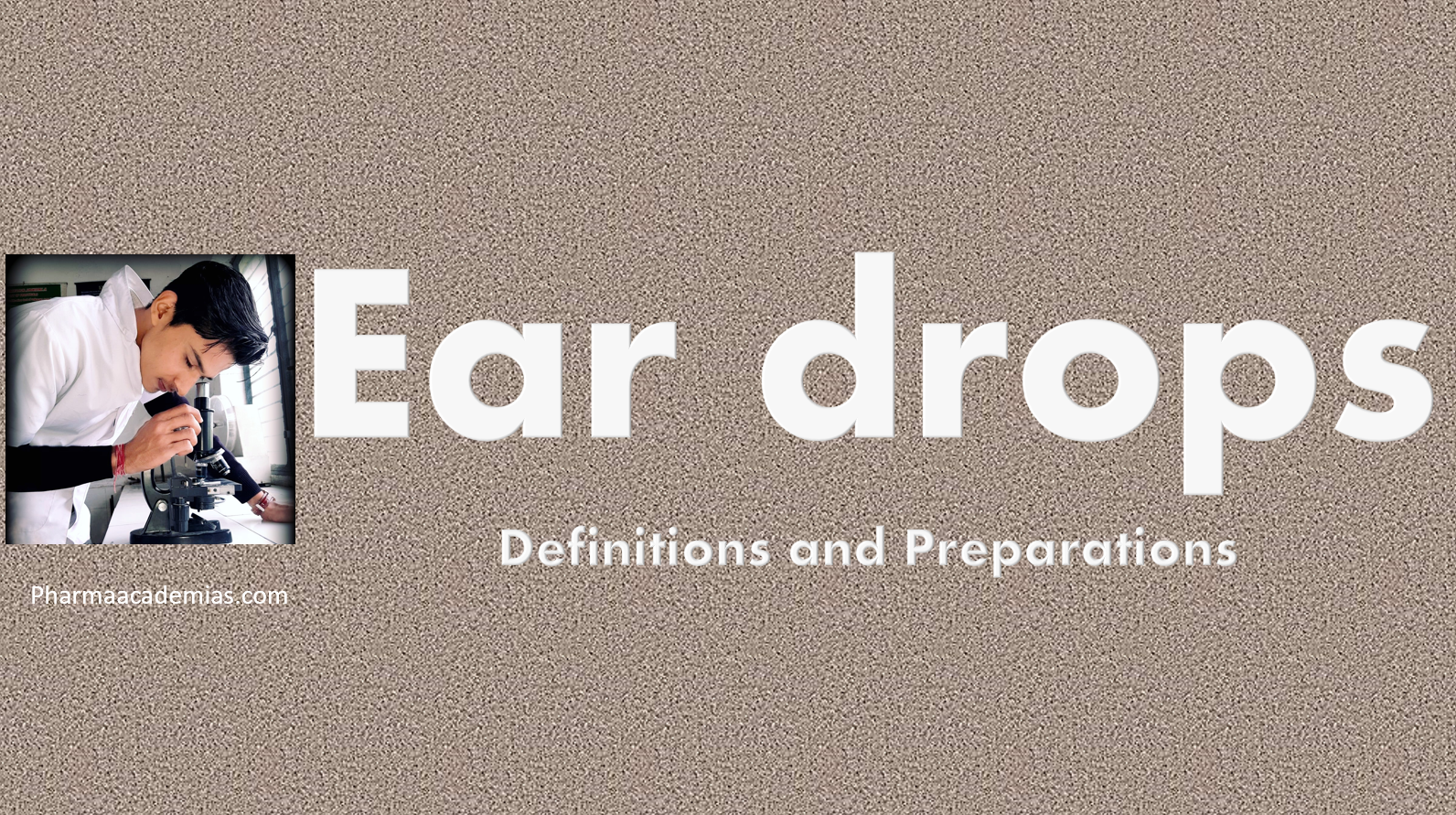Eardrops, also known as ear or otic drops, are pharmaceutical or therapeutic solutions designed for application directly into the ear canal. They are used for various purposes, including treating ear infections, softening earwax, relieving ear pain, and delivering medications to the ear. Here are some key definitions and preparations related to eardrops:
1. Eardrops
Definition: Eardrops formulate liquid solutions for administering directly into the ear canal.They may contain active ingredients for treating specific ear conditions or symptoms.
2. Otic Drops
Definition: Otic drops refer to ear drops specifically designed for use in the ears. “Otic” pertains to the ear.
3. Common Ingredients in Eardrops
Antibiotics: Used to treat bacterial ear infections.
Antifungals Antifungals: Employed for fungal ear infections.
Corticosteroids Corticosteroids: Reduce inflammation and provide relief from pain.
Analgesics: Pain-relieving agents for ear pain.
Decongestants: Help relieve congestion in the ear.
4. Preparations and Usage
Sterility: Eardrops must be sterile to prevent introducing infections into the ear. They are usually packaged in sealed, sterile containers.
Dosage: The correct dosage must be followed as a healthcare professional prescribes. Overuse or misuse can lead to adverse effects.
Temperature: Patients may need to warm some eardrops to body temperature before applying them for comfort.
Patient Position: Depending on the medication, the patient may need to lie down or tilt the head to allow the drops to penetrate the ear canal effectively.
Ear Cleaning:In some cases, healthcare professionals recommend cleaning the ear or removing excess earwax before applying eardrops to enhance their effectiveness.
Shaking the Solution: Some eardrops may require shaking before use to ensure proper mixing of ingredients.
5. Common Conditions Treated with Eardrops
Otitis Media: Middle ear infections.
Otitis Externa: Infections of the external ear canal (swimmer’s ear).
Earwax Blockage: Eardrops can help soften and facilitate the removal of impacted earwax.
6. Cautions
Allergies: Patients should inform healthcare providers of any known allergies before using eardrops.
Tympanic Membrane Integrity: Avoid using eardrops if there is a perforation in the eardrum, as it can lead to complications.
Always follow the guidance provided by a healthcare professional or the product’s instructions when using eardrops to ensure safe and effective treatment. If there are any concerns or adverse reactions, seeking medical advice promptly is important.

